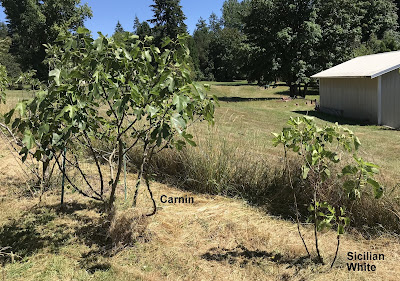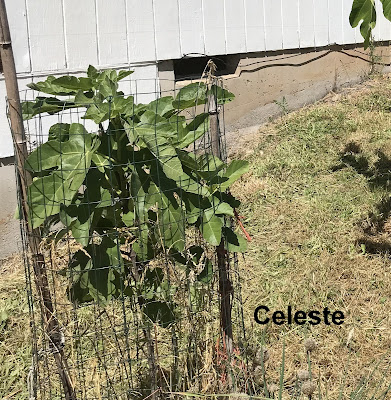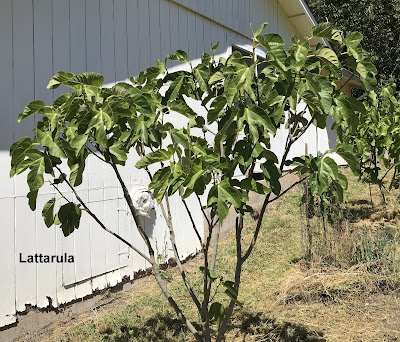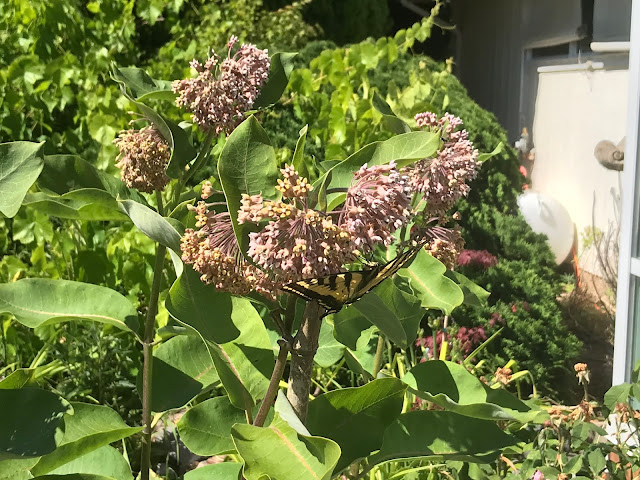This is the approx 16 year old Petite Negri fig tree that I moved last November. I moved it because this is among my favorite fig tree varieties, excellent flavor, but I'm converting the old place to a more conventional yard for eventual sale, and this tree is so slow starting and growing, I didn't want to wait many years for a decent crop.
I spent several days digging. I took as large a root mass as I could, but it was necessary to cut several large roots. Based on WA State extension information, I did not cut back the top, other than what was needed for safe moving.
I've been watering the tree every week, using the 5-gallon bucket with holes in bottom method, 3 buckets full of water slowly draining, each time. There was no die-back at all. I have spread the growth from the bottom, for a wider, bowl-shaped crown. The height is about 8 feet tall. I left a few brebas - about 10 - but removed the rest, so that nutrients and photosynthetic energies could go into regenerating root biomass and some top growth. The top growth was minimal - about 6 inches - although this tree grows slowly anyway.
Compared to other fig trees in the same row, this one is not nearly as lush. I imagine that it needs at least a year to resume normal growth. I may cut back - minimally - top growth this fall, so that the top is a little lower and more bushy.
Overall I'm very pleased. The tree made it through the move, there was no die-back, and my back has fully recovered.; I'm happy to anticipate more delicious figs from this tree. As a bonus, this location is much sunnier, which may move the season forward a week or two. That would be nice, because I lose a lot of this variety of figs to the fall rains.















